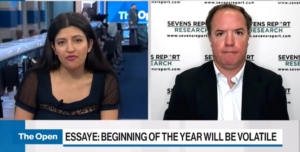Why Negative News (Still) Isn’t Making Stocks Drop
What’s in Today’s Report:
- Why Negative News (Still) Isn’t Making Stocks Drop
- Weekly Market Preview: More Insights into Hard vs. Soft Landing This Week
- Weekly Economic Cheat Sheet: Retail Sales (Tues) the Key Report This Week
Futures are modestly higher following reports of progress on the debt ceiling negotiations over the weekend.
Another debt ceiling meeting is scheduled for Tuesday at the White House and major officials (including Biden and Yellen) stated progress was made in negotiations over the weekend, although a deal still isn’t likely this week.
Economically, Euro Zone IP slightly missed estimates.
Today there’s only one notable economic report, the May Empire Manufacturing Index (E: -3.70), and markets will want to see stability in the data to further hint towards a soft landing.
Looking at the Fed, there are numerous speakers today including Bostic (8:45 a.m. ET), Kashkari (9:15 a.m. ET), Barkin (12:30 p.m. ET) and Cook (5:00 p.m. ET) and while their comments may have a hawkish tone, the market firmly believes the Fed has paused on rate hikes and it’ll take Powell disavowing that notion for investors to reconsider.
Finally, debt ceiling headlines will likely continue, and don’t be shocked if there’s some pushback on the “progress” narrative from the weekend as the political gamesmanship kicks into high gear, with just over two weeks till the “X” date.




